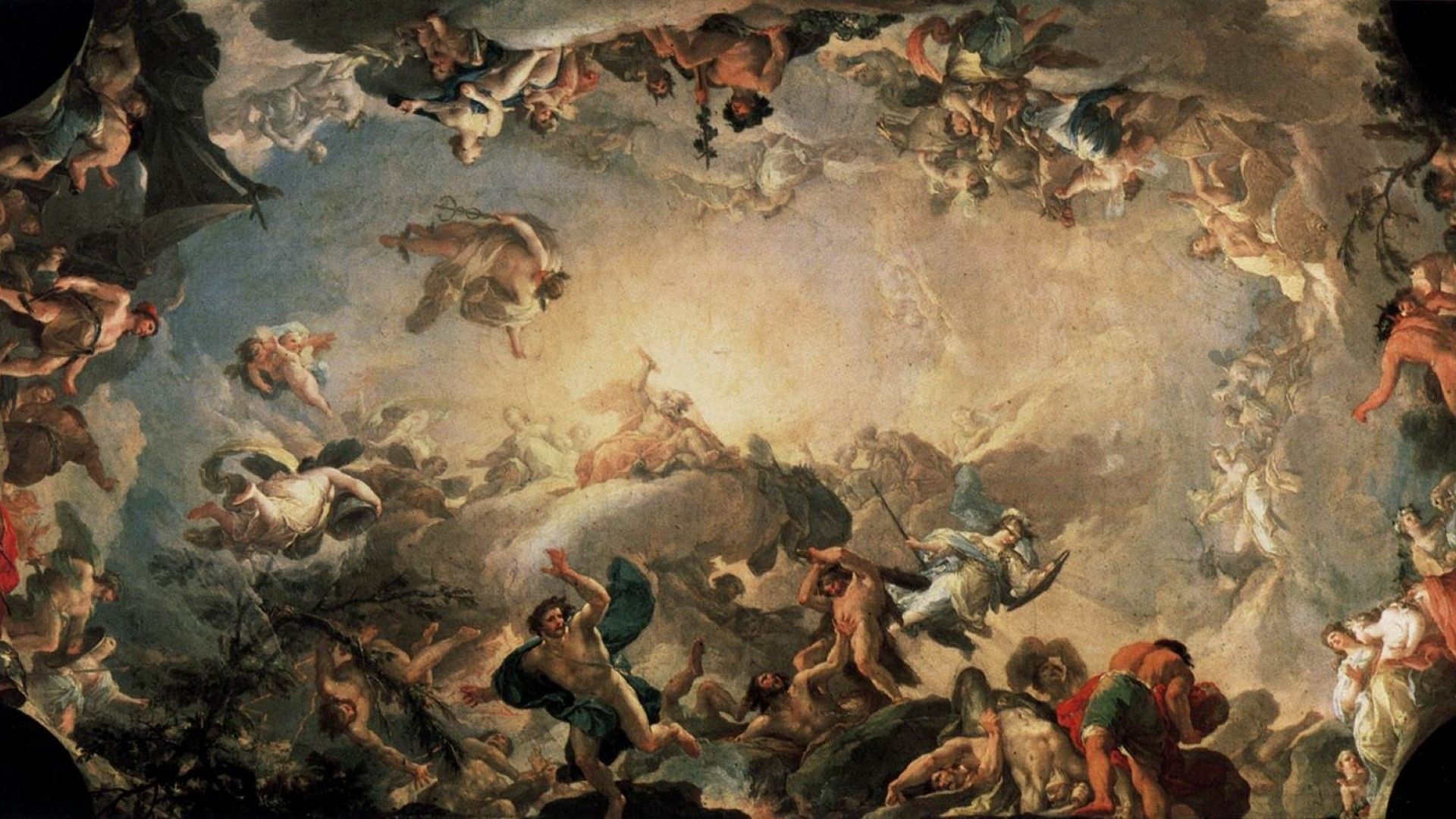
Eriphyle
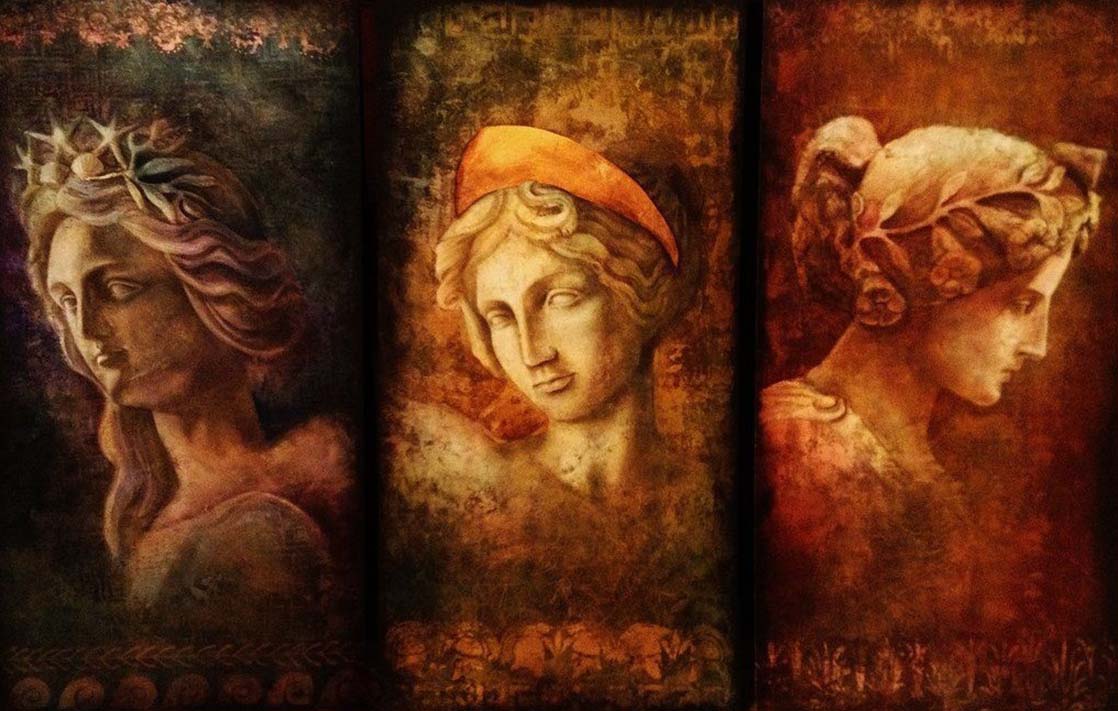
GO TO:
Eriphyle (Ancient Greek: Ἐριφύλη) was a figure in Greek mythology who, in exchange for the Necklace of Harmonia (also called the necklace of Eriphyle) given to her by Polynices, persuaded her husband Amphiaraus to undertake the raid which precipitated the Seven Against Thebes. She was then slain by her son Alcmaeon. Eriphyle is particularly famous for accepting bribes that put her husband and sons in harm’s way.
MYTHOLOGY
Eriphyle, daughter of Talaus, was the mother of Alcmaeon and the wife of Amphiaraus, a noted seer, and grandson of Melampus.
Eriphyle would become mother to a number of children, the most famous of whom were two sons, Alcmaeon and Amphilochus. Additionally, there were daughters of Eriphyle commonly named including Demonassa and Eurydice, and potentially Alexida.
Away from Argos, trouble was rumbling in Thebes, for Eteocles, son of Oedipus, was refusing to share the kingdom with his brother, Polynices. Adrastus would side with his new son-in-law Polynices, and an army was gathered to place Polynices upon the throne.
Eriphyle’s husband refused to join the expedition though, for as a seer, he knew his own death would follow if he did so.
Polynices though came to Eriphyle to try and persuade her to convince her husband to join the war. Eriphyle accepted a bribe from Polynices in the form of the Necklace of Harmonia. The necklace was a treasure of Thebes, crafted by the gods, and presented to Harmonia upon her marriage to Cadmus.
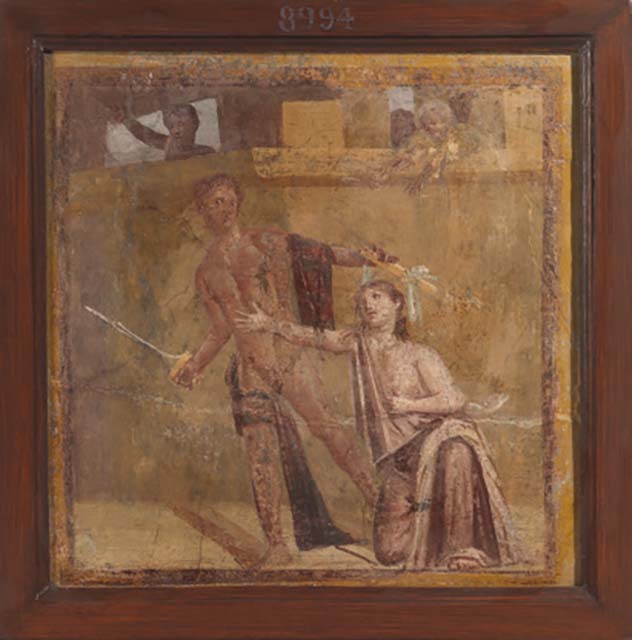
In regards to the Necklace of Harmonia what we know is as follows:
"Zeus gave him to wife Harmonia, daughter of Aphrodite and Ares. And all the gods quitted the sky, and feasting in the Cadmea celebrated the marriage with hymns. Cadmus gave her a robe and the necklace wrought by Hephaestus, which some say was given to Cadmus by Hephaestus, but Pherecydes says that it was given by Europa, who had received it from Zeus."
A relic was being shown in Amathus in Cyprus, in the time of Pausanias (2nd century CE):
"In Cyprus is a city Amathus, in which is an old sanctuary of Adonis and Aphrodite. Here they say is dedicated a necklace given originally to Harmonia, but called the necklace of Eriphyle, because it was the bribe she took to betray her husband. It was dedicated at Delphi by the sons of Phegeus (how they got it I have already related in my history of Arcadia), but it was carried off by the tyrants of Phocis."
The necklace that Pausanias was shown was of green stones with gold, which made him skeptical of its being the one mentioned by Homer (Odyssey xi.327), for he noted other occasions in the Odyssey where necklaces made of gold and stones mention the stones.
So, what is so special about the Necklace of Harmonia (besides its beauty)?
The Necklace was not only created by the famous god Hephaestus but it also had magical powers!
... for more details about the Necklace of Harmonia, read the section after the end of the current article
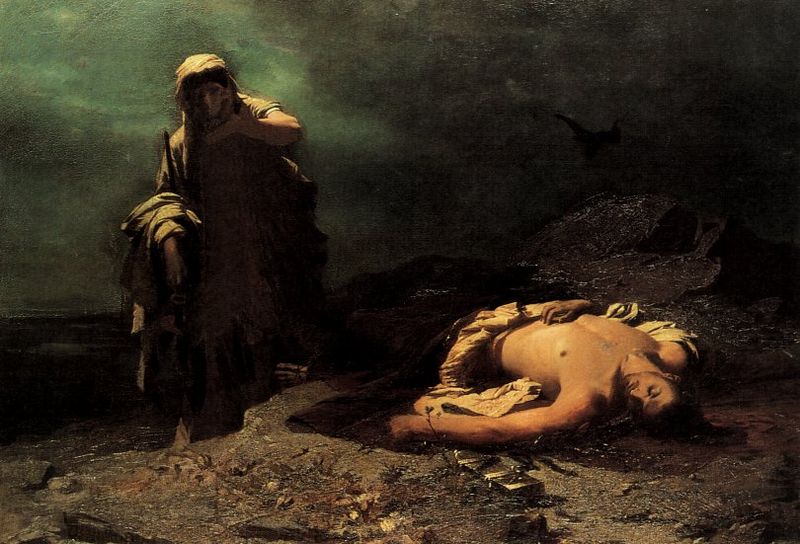
Back to our story...
The bribe was sufficient for Eriphyle to convince Amphiaraus to take up arms. Now people may ask how Eriphyle was able to convince Amphiaraus to do something which he knew would result in his death, but Amphiaraus had previously pledged that Eriphyle would be the arbitrator between him and Adrastus if there was any disagreement; and so Amphiaraus was forced to keep his word.
Eriphyle would of course be left a widow, for the expedition upon which Amphiaraus went is known as the Seven Against Thebes, a war which failed to achieve its aims, for the Seven, aside from Adrastus were killed in the war.
Some say of Amphiaraus charged his sons, Alcmaeon and Amphilochus with killing their mother, for Eriphyle’s betrayal of her husband.
Ten years after, the sons of the Seven Against Thebes, known as the Epigoni, purposed to march against Thebes to avenge the death of their fathers. When they consulted the oracle, the god predicted victory under the leadership of Alcmaeon, son of Amphiaraus and Eriphyle. Alcmaeon joined the expedition, though he was loath to lead the army until he had punished his mother (for Eriphyle had received the Necklace of Harmonia, from Polynices, thus causing the death of Amphiaraus). Now Eriphyle persuaded also her sons to go to the war.
When after the capture of Thebes, Alcmaeon learned that his mother Eriphyle had been bribed by Polynices' son Thersander, by means of the Robe of Harmonia, he was more enraged than ever, and killed his mother upon his return.
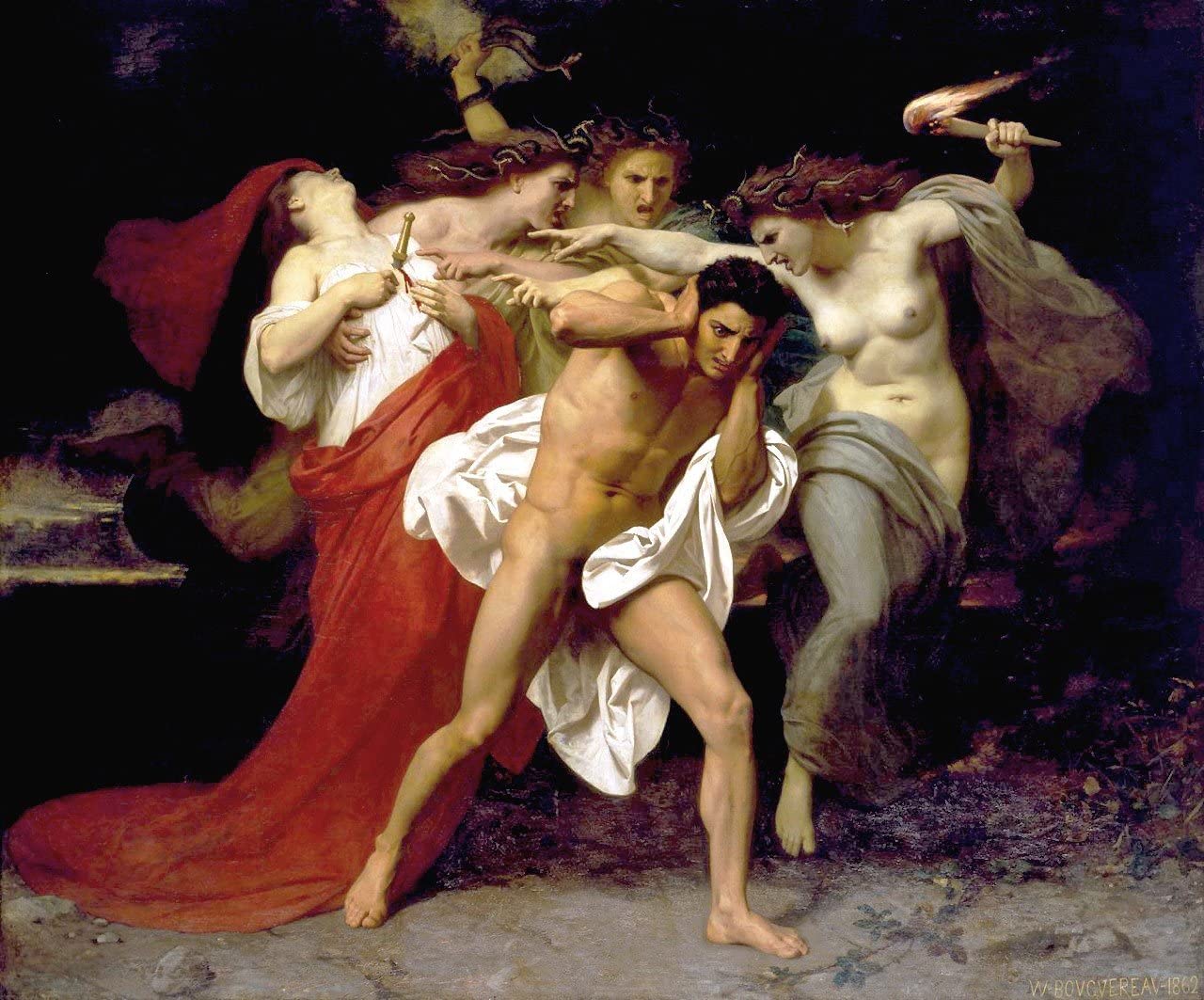
The final moments of Eriphyle... The Epigoni were successful in their attempt to take Thebes but upon his return home, it was said that Alcmaeon was instructed by Apollo to carry out his father’s wishes.
Eriphyle is thus killed by Alcmaeon, though the manner of her death is not expanded upon in surviving sources. Virgil, the Aeneid, tells of Eriphyle displaying the wounds inflicted upon her by Alcmaeaon in the Underworld.
For the act of matricide, Alcmaeon would be pursued by the Erinyes, despite the son of Eriphyle and Amphiaraus acting upon the words of Apollo.

THE NECKLACE OF HARMONIA
The Necklace of Harmonia, also called the Necklace of Eriphyle, was a fabled object in Greek mythology that, according to legend, brought great misfortune to all of its wearers or owners, who were primarily queens and princesses of the ill-fated House of Thebes.
The beginning
Hephaestus, blacksmith of the Olympian gods, discovered his wife, Aphrodite, goddess of love, having a sexual affair with Ares, the god of war. He became enraged and vowed to avenge himself for Aphrodite's infidelity by cursing any lineage of children resulting from the affair. Aphrodite bore a daughter, Harmonia, from Ares' seed. Harmonia grew up and was later betrothed to Cadmus of Thebes. Upon hearing of the royal engagement, Hephaestus presented Harmonia with an exquisite necklace and robe as a wedding gift.
In some versions of the myth, only the necklace is given. In either case, the necklace was wrought by Hephaestus' own hand and was cursed to bring disaster to any who wore it.
Magical properties
The magical necklace, referred to simply as the Necklace of Harmonia, allowed any woman wearing it to remain eternally young and beautiful. It thus became a much-coveted object amongst women of the House of Thebes in Greek myths. Although no solid description of the Necklace exists, it is usually described in ancient Greek passages as being of beautifully wrought gold, in the shape of two serpents whose open mouths formed a clasp, and inlaid with various jewels.
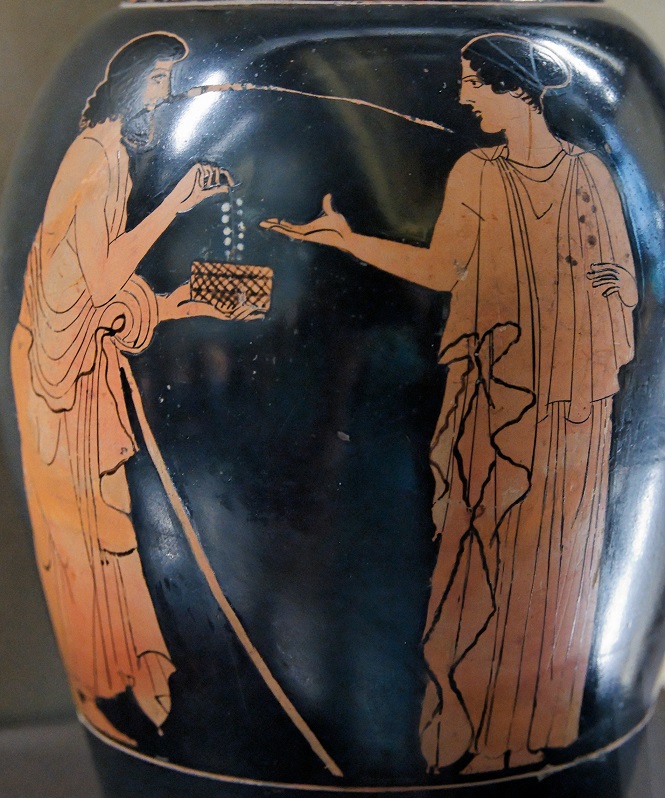
The Owners
Harmonia and Cadmus were both later transformed into serpents (dragons in some versions of the myth). The extent of their suffering as a result of Harmonia wearing the Necklace is debatable because Cadmus and Harmonia are said to have ascended to the paradise of the Elysian Fields after their transformation. The Necklace then went to Harmonia's daughter Semele. She wore it the very day that Hera visited her and insinuated that her husband was not really Zeus. This led to Semele's destruction when she foolishly demanded that Zeus prove his identity by displaying himself in all his glory as the lord of heaven.
Several generations later, Queen Jocasta wore the legendary Necklace. It allowed her to retain her youth and beauty. Thus, after the death of her husband King Laius, she unknowingly married her own son, Oedipus. When the truth about Oedipus was later discovered, Jocasta committed suicide, and Oedipus tore out his own eyes. The descendants and relations of Oedipus all suffered various personal tragedies, as described in Sophocles' "Three Theban Plays": Oedipus Rex, Oedipus at Colonus, and Antigone.
Polynices then inherited the Necklace. He gave it to Eriphyle, so that she might use it to persuade her husband, Amphiaraus, to undertake the expedition against Thebes. This led to the death of Eriphyle, Alcmaeon, Phegeus, and the latter's sons. Through Alcmaeon, the son of Eriphyle, the necklace then came into the hands of Phegeus' daughter Arsinoe (named Alphesiboea in some versions), then to the sons of Phegeus, Pronous and Agenor, and lastly to the sons of Alcmaeon, Amphoterus and Acarnan. Amphoterus and Acarnan dedicated the Necklace to the Temple of Athena at Delphi, to prevent further disaster amongst human wearers.
The tyrant Phayllus, one of the Phocian leaders in the Third Sacred War (356 BC-346 BC), stole the necklace from the Temple and offered it to his mistress. After she had worn it for a time, her son was seized with madness and set fire to the house, where she perished in the flames along with all her worldly treasures. No additional legends about the cursed Necklace of Harmonia exist after the story of Phayllus's mistress.
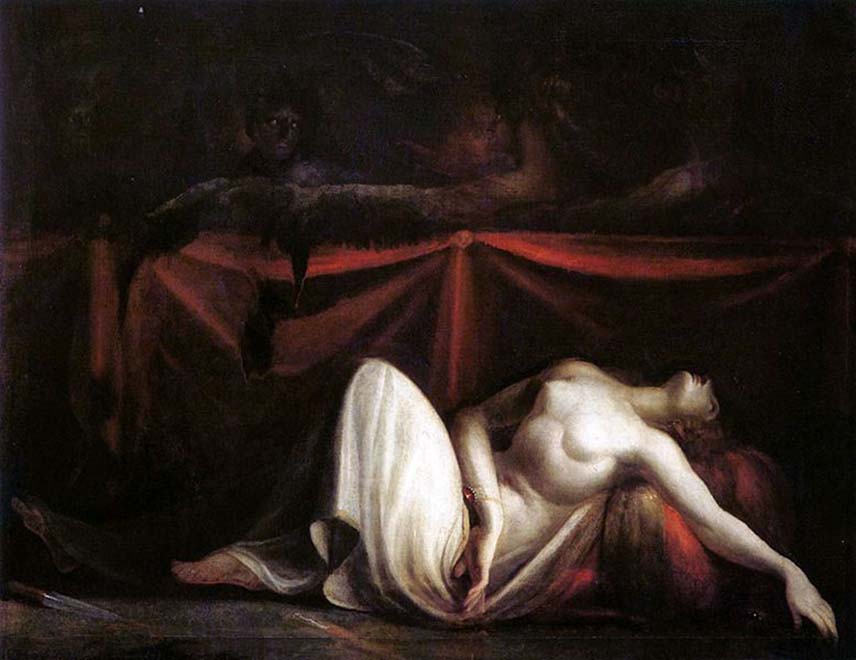
Sources
Pausanias, Description of Greece ix.41.2
Apollodorus, Biibliotheke iii.4.2
Statius, Thebaid 2.265-305, 4.188-213
Voltaire's Ériphyle
Our Mobile Application
Check out Our Mobile Application "Ancient Greece Reloaded"


